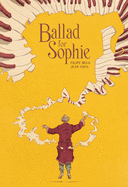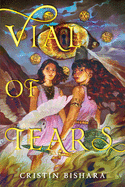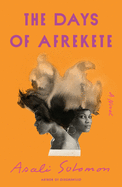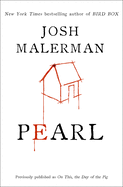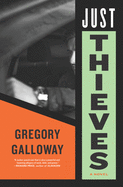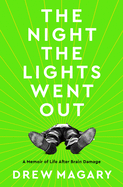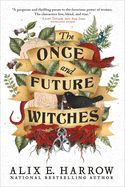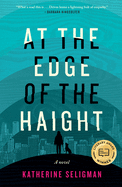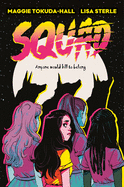Tuesday, October 19, 2021
William Maxwell served as fiction editor of the New Yorker from 1936 to 1975, a period some consider the brightest in the magazine's literary history. Though he's best known for that work, Maxwell was a talented author in his own right. His final novel and two books that offer the perspectives of others on his work give a sense of the depth and breadth of his influence.
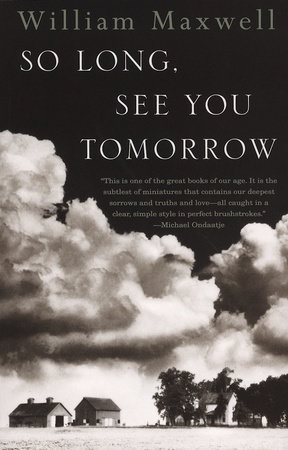 Maxwell's final novel, So Long, See You Tomorrow (Vintage, $16), is recognizable as a work of autofiction long before that term became popularized. Set in a small Illinois town that bears a striking resemblance to Maxwell's hometown of Lincoln, it features adultery, murder and suicide, but for all these sensationalist aspects, its tone is set by the seemingly insignificant incident between two young boys that provides the novel's humble title.
Maxwell's final novel, So Long, See You Tomorrow (Vintage, $16), is recognizable as a work of autofiction long before that term became popularized. Set in a small Illinois town that bears a striking resemblance to Maxwell's hometown of Lincoln, it features adultery, murder and suicide, but for all these sensationalist aspects, its tone is set by the seemingly insignificant incident between two young boys that provides the novel's humble title.
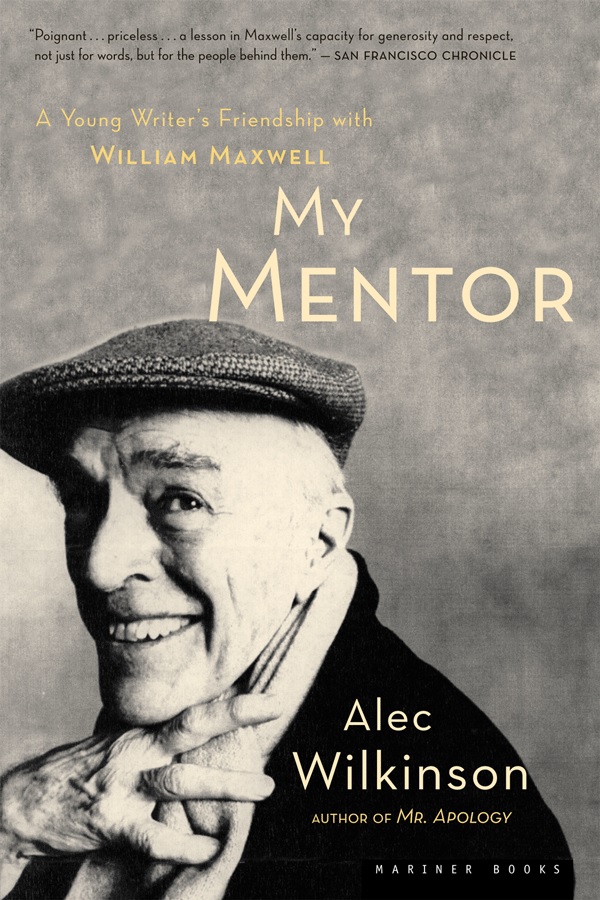 Alec Wilkinson was 24 years old when he approached Maxwell, his father's closest friend, for advice on the nonfiction book he was writing about his experiences as a police officer in the small town of Wellfleet, Mass. Much more than an account of Maxwell's literary tutelage, Wilkinson's My Mentor: A Young Writer's Friendship with William Maxwell (Mariner, $14.95) is the intimate, moving story of the friendship that flowered between the two men.
Alec Wilkinson was 24 years old when he approached Maxwell, his father's closest friend, for advice on the nonfiction book he was writing about his experiences as a police officer in the small town of Wellfleet, Mass. Much more than an account of Maxwell's literary tutelage, Wilkinson's My Mentor: A Young Writer's Friendship with William Maxwell (Mariner, $14.95) is the intimate, moving story of the friendship that flowered between the two men.
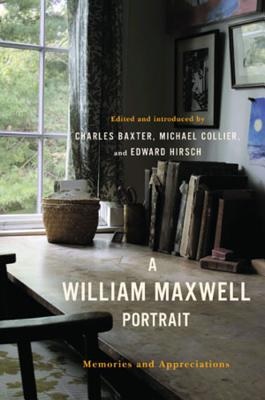 Along with well-known writers like John Updike and Alice Munro, Wilkinson is one of the contributors to A William Maxwell Portrait: Memories and Appreciations, (W.W. Norton, $45), a collection of tributes to the man and his work that compose a "collective portrait of one of the finest writers of our time," and seeks to answer the question: "how did he get this way, and what elements went into these beautiful books that he gave to the world?" Maxwell's 1955 speech on the writing craft, "The Writer as Illusionist," is a delightful bonus. --Harvey Freedenberg, freelance reviewer
Along with well-known writers like John Updike and Alice Munro, Wilkinson is one of the contributors to A William Maxwell Portrait: Memories and Appreciations, (W.W. Norton, $45), a collection of tributes to the man and his work that compose a "collective portrait of one of the finest writers of our time," and seeks to answer the question: "how did he get this way, and what elements went into these beautiful books that he gave to the world?" Maxwell's 1955 speech on the writing craft, "The Writer as Illusionist," is a delightful bonus. --Harvey Freedenberg, freelance reviewer
The Days of Afrekete
by Asali Solomon
What happens in The Days of Afrekete, the second novel by Asali Solomon (Disgruntled), takes just an evening: Liselle Belmont prepares for and hosts a dinner party to thank her husband Winn's loyal supporters, despite a failed political campaign. But Solomon deftly expands the defining event with background stories enhanced with sharp insights on race, class, privilege, shifting identities. Her cutting humor especially stings.
Liselle and Winn have been married for almost 15 years. She's West Philadelphia Black, he's Connecticut white; they met in New York but settled in Philadelphia. She's been teaching history at a private school, but is taking a break, ostensibly to help Winn's run for state representative. Xochitl (whose name Liselle can't pronounce) arrives to serve the gathering, replacing Liselle's usual help; aging bad-kneed Jimena has sent her Ph.D. student/immigrant rights activist daughter instead. Winn seems clueless, but Liselle is expecting a surprise guest and shuttles their teen son off to the house of "forced-family friends." Meanwhile, another uninvited someone is en route.
Solomon, an English and creative writing professor at Haverford College--ready with well-aimed jabs and nods at academia--chooses her native Philadelphia as background as she did with her previous two titles. Her obvious familiarity with the setting grounds Liselle as she moves effortlessly through neighborhoods and situations, code-switching to adapt to her surroundings. Solomon's writing is a showcase of incisiveness: "She felt her ever twoness as the Black mistress of a tiny plantation"; "He was unfailingly polite but not thoughtful." In a brilliant collage, Solomon's skillful sentences, paragraphs, chapters coalesce into formidable storytelling. --Terry Hong, Smithsonian BookDragon
Discover: A dinner party hosted by the Black wife of a white would-be politician becomes a scathing examination of race, privilege, and identity in Asali Solomon's penetrating sophomore novel.
Mystery & Thriller
Pearl
by Josh Malerman
It's creepy when Pearl the pig sits upright on a hay bale like a human, but it's bone chilling when this pig convinces others to kill for him in the bizarre, macabre thriller Pearl.
In Chowder, a rural town in Michigan, a high school student announces over the intercom that a seventh-grader beheaded a pig at his grandfather's farm and swears another pig made him do it. Stoner students Mitch and Jerry hear the story and convince fellow student Susan to go with them to view the supposedly psychotic animal. What starts out as a joke quickly becomes a nightmare for the trio when they come face to face with Pearl the pig inside the farm's barn. Suddenly, Pearl is in their heads, manipulating their thoughts and making the other pigs attack them. Jerry tries a daring escape and the pigs swarm him, but a wounded Susan uses the distraction to break into the main farmhouse and call 911. The arriving cops laugh off Susan's crazy story of a mind-controlling pig until they also become victims to Pearl's powerful ability. More disturbing: Pearl has just discovered there's a bigger world beyond the farm and he can control the minds of humans from afar.
Josh Malerman (Bird Box; A House at the Bottom of a Lake) has mastered the technique of taking a normal scenario (boy visiting his grandfather's farm), adding an incredibly disturbing reality (mind-controlling farm animal) and letting the story spiral in a believable way. Pearl is a riveting novel of the bizarre that demands discussion. --Paul Dinh-McCrillis, freelance reviewer
Discover: In a superbly written thriller by the author of Bird Box, a telepathic farm pig named Pearl uses mind control to take over a small town.
Just Thieves
by Gregory Galloway
Surely the most famous MacGuffin in film noir appears in 1955's Kiss Me Deadly, in which the action revolves around a mysterious box whose contents ultimately prove to be of little importance to the story. Likewise, in Just Thieves by Gregory Galloway (As Simple as Snow; The 39 Deaths of Adam Strand), a MacGuffin drives the action but will concern readers far less than the personal turmoil of the object's pursuers.
As Just Thieves begins, Rick and Frank, a pair of low-level crooks and recovering addicts, are on an out-of-town job in an unnamed American city. Their boss has promised them an easy assignment, but Rick, the novel's narrator, is still antsy: "The job was always easy. It was everything else that turned out to be the problem." Sure enough, Rick and Frank's errand is temporarily derailed by the presence of a dead horse in the street outside their hotel. Behind schedule now, Rick manages to break into the target house and find the small statue that he's been instructed to filch, but after he gets into the rental that Frank is driving, they're hit by a speeding car. While Frank waits for a tow, Rick, pilfered statue in hand, makes it back to the hotel, but only readers who don't know their noir will believe that things proceed smoothly from here.
Like the best noir, Just Thieves places the same value on plot and characterization. It could pass as a golden-era noir if one overlooks the occasional references to wi-fi and texting. --Nell Beram, author and freelance writer
Discover: This modern-day crime novel, centered on a curious object of uncertain value, wears its indebtedness to classic film noir on its sleeve--and it's all the better for it.
Death at Greenway
by Lori Rader-Day
Lori Rader-Day (The Lucky One; The Day I Died) uses historical incidents as the foundation for her atmospheric novel Death at Greenway. The story begins in 1939, with author Agatha Christie deciding to do her bit for the war effort by opening up Greenway, her vacation home, for young evacuees from London.
The " 'vacs" are accompanied by two nurses, both named Bridget Kelly. The first Bridget Kelly, "Bridey," is a young Irish nurse trainee, who was devastated by the death of her mother and five siblings in the Blitz. The other Bridget Kelly, "Gigi," says she has nurse training, but keeps shirking their duties to the 'vacs, much to Bridey's annoyance.
Greenway is a pleasant enough place to land--on the surface. But a series of thefts plagues the neighborhood, German bombs keep falling nearby, and then a young man whom the Bridgets met on the train turns up dead in the river. Bridey begins to suspect that there might be more to Gigi's presence at Greenway than meets the eye.
Death at Greenway does an excellent job of encapsulating the terror of the war, and the tension felt by those on the home front. Bridey's anguish over the loss of her family, the mysterious occurrences in the neighborhood, and Gigi's compelling character all add to the intrigue. Mrs. Christie may be away in London, not noticing the drama happening under her very roof, but readers are sure to appreciate it. --Jessica Howard, bookseller at Bookmans, Tucson, Ariz.
Discover: In this intriguing historical novel set during the worst of the Blitz, a murder happens at Agatha Christie's home.
Graphic Books
Ballad for Sophie
by Filipe Melo, illus. by Juan Cavia, transl. by Gabriela Soares
This passionate, sophisticated graphic novel from Portuguese author Felipe Melo and Argentinean illustrator Juan Cavia chronicles the rise, fall and redemption of a superstar pianist against a backdrop that stretches from the war-torn 1930s to the tumultuous 1970s.
In 1997, in Cressy-la-Valoise, France, aging, reclusive pianist Julien Dubois refuses to let Le Monde intern Adeline Jourdain interview him. Her tenacity eventually impresses the maestro, as does her recognition of a recording by obscure pianist François Samson. Grudgingly, he tells her about the boyhood piano competition where privileged young Julien first hears poverty-stricken "true genius" François perform in 1933, related in a flashback. Julien's mother bribes the judges, but the purchased win is hollow. François becomes the questing beast Julien will chase throughout his life, a saga that sees Julien homeless during the Nazi occupation of France before rising to stardom as pop icon Eric Bonjour in the late '40s. Fame brings wealth, women and self-destructive behavior as he continues obsessing over his elusive rival. However, Adeline herself holds the most shocking secret of all.
Pianos levitate and managers appear as demons, as Julien fights for his artistic soul in this gorgeous symphony of illusory success and the hunger for artistic genius and purity. Translated by Gabriela Soares, Melo's dialogue flows like a sonata. Cavia's vivid illustrations, drenched in late-sun golds and dramatic reds, can swing from elegant to psychedelic in the tick of a metronome. Decadent and life-affirming, Ballad for Sophie is purely virtuosic. --Jaclyn Fulwood, blogger at Infinite Reads
Discover: An elderly, reclusive music superstar relates a sweeping saga of passion and rivalry in this elegant, redemptive graphic novel.
Biography & Memoir
The Night the Lights Went Out: A Memoir of Life After Brain Damage
by Drew Magary
Deadspin and Defector writer Drew Magary offers a funny, thrilling and surprisingly tender story of his life-altering brain damage in The Night the Lights Went Out. In December 2018, Magary was enjoying a night out with his co-workers after the annual Deadspin Awards when a mysterious fall caused him to smack his head on a concrete floor at a karaoke bar. Following intensive brain surgery and a two-week coma--which everyone doubted he would survive--he woke up, but not as the same man he'd been before. The Night the Lights Went Out spans the time of his coma and the year following, as Magary struggles with his new disabilities and mood swings, and comes to terms with the person he has become.
As in his columns, Magary's prose brims with humor and irreverent observations. Nevertheless, unlike in his columns, the writing in his memoir often has a compassionate center, reaching for hopeful heights even in the midst of unimaginable tragedy. Magary's reflections on his turbulent recovery are both fascinating and stirring, but it is the memoir's first half--which tells the story of the accident and ensuing coma, through the oral histories of his family, friends and co-workers--that truly shines. The snippets from these witnesses are as devastating as they are full of love, as heartbreaking as they are inspiring. Through these intimate remembrances, the relationships and people who define Magary's existence come to life, and readers get to experience the therapeutic nature that both hearing and compiling these remembrances must have been for the writer himself. --Alice Martin, freelance writer and editor
Discover: A hilarious and heartwarming testament to the power of family and friends, The Night the Lights Went Out follows a man with a biting sense of humor on his journey to an imperfect recovery.
Performing Arts
Colorization: One Hundred Years of Black Films in a White World
by Wil Haygood
Readers may find themselves reaching for the popcorn while immersed in Colorization: One Hundred Years of Black Films in a White World. The stories that Wil Haygood tells--of pioneers, mavericks, rebels--are as gripping as anything that one might hope to see on the big screen.
Colorization is devoted to Black representation in film and the Black artists and visionaries who broke new ground in the movie business, starting with Oscar Micheaux, who made 1919's The Homesteader, the first feature-length film by a Black director. Proceeding chronologically, Haygood spotlights trailblazing Black industry players, above all Black actors, some of whom became household names ("White Americans... used [Sidney] Poitier as a yardstick to gauge race relations"). For other actors (Dorothy Dandridge, Billy Dee Williams), the fanfare that greeted their initial "crossover success" was followed by non-ringing telephones--a reflection of Hollywood's vision problem when it came to color-blind casting.
Haygood, a biographer of Sammy Davis Jr. and others, is a scrupulous researcher who is ever mindful of how what's happening on-screen mirrors what's going on off of it: the March on Washington, the Rodney King trial and so on. Haygood is also an animated writer (Spike Lee "still held tight his Captain Ahab persona, firing his harpoon at the big white whale of Hollywood") and a wry social critic: of Black-female-centered films of the post-civil-rights era, he writes, "Sheba, Baby; Claudine; Friday Foster; Coffy; Cleopatra Jones; Jackie Brown. All those Mammy roles, avenged." Colorization is a major undertaking and a major achievement. --Nell Beram, author and freelance writer
Discover: This survey of a century of Black artists and visionaries working in film is as thorough as it is entertaining.
Now in Paperback
The Once and Future Witches
by Alix E. Harrow
Alix E. Harrow (The Ten Thousand Doors of January) enters the ranks of the growing feminist witch genre with The Once and Future Witches, an expansive, angry and ultimately hopeful historical fantasy novel set in an alternate-history 1893 New Salem, 200 years after the (fictional) complete destruction of Salem.
The initially estranged Eastwood sisters represent three archetypal witches and women: the Maiden, the Mother and the Crone, though Harrow makes clear that every woman is not just one thing. Eldest sister and librarian Bella is the Crone, often found researching spells and acting as the voice of reason. Pregnant middle sister Agnes is the Mother, at times hesitant to enter or continue the fight. Much younger Juniper, half-feral and wildly optimistic, takes on the role of a warrior Maiden, murdering their abusive father and reuniting the sisters at the beginning of the novel; she is the glue that holds them together.
Harrow's world-building is intricate, and the plot is full of smaller battles and acts of rebellion, but her protagonists are complex women with clear motivations. The Once and Future Witches deals heavily with feminist themes, including women's suffrage, sexual harassment and legal oppression, but Harrow also works to broaden the scope beyond white feminism. Harrow's diverse cast of secondary characters are working toward equity in other spheres: the labor movement and unions, Black civil rights, sex work and immigrant and LGBTQ+ experiences.
And although Harrow never pretends that change is immediate or easy, in the world she's created, witching is inside everyone, meaning that the power to effect change is within the grasp of all. --Suzanne Krohn, editor, Love in Panels
Discover: Readers looking for a feminist alt-historical fantasy about reclaiming witchcraft and taking down the dominant power structures will be riveted.
Missionaries
by Phil Klay
When Iraq War veteran Phil Klay's debut short story collection, Redeployment, won the National Book Award in 2014, it was clear that a talented new writer had appeared on the literary scene. The promise revealed in that work now is fulfilled in his first novel, Missionaries--a New York Times Notable Book and one of the Wall Street Journal Ten Best Books of the Year 2020--a dark and complex story of the U.S. involvement in foreign conflicts most of America's citizens know, and often care, little about.
Missionaries focuses on the lives of four central characters--Abel, a young Colombian who enters the shadowy world of a paramilitary group after his village is destroyed by guerrilla forces; Mason Baumer, a Special Forces medic serving in Afghanistan; Juan Pablo Pulido, a lieutenant colonel in the Colombian army; and Lisette Marigny, an American journalist based in Kabul.
After a series of sections that range in time and territory from Colombia in the mid-1980s to Afghanistan in 2015--narrated by each member of this quartet in the first person--the novel shifts to a third-person point of view for its second half, as the lives of these characters intersect in the war-ravaged South American nation.
Even as he delivers a tightly controlled, propulsive story of shifting loyalties and outright betrayal, one that at times features graphically described violence, Klay digs deeply into the minds and motivations of his characters. He reveals how, though their paths to engagement in a world of never-ending conflict may have differed, they all find themselves unable to escape its pull. Readers looking for moral clarity won't find it here, as Klay scrupulously avoids assigning praise or blame to anyone residing in this ethically ambiguous universe. --Harvey Freedenberg, freelance reviewer
Discover: Phil Klay's accomplished first novel explores the world of four characters embroiled in two of the world's contemporary shadow conflicts.
At the Edge of the Haight
by Katherine Seligman
Katherine Seligman's gripping debut novel, At the Edge of the Haight, explores a community on the edge of a historic setting and on the edge of getting by, with a compelling protagonist and an array of problems to wrestle with.
Twenty-year-old Maddy Donaldo lives in present-day Golden Gate Park with a sort of chosen family. There's Ash, "a skinny upside-down triangle" of a young man. Quiet, gentle, strawberry-blond Fleet has a pet rat named Tiny. Spike-haired Hope talks to everyone; she's good with the tourists, but a bit of an instigator, too. And, most importantly, there's Root, Maddy's devoted dog. Together the friends scavenge food, find shelter, protect one another and navigate their tricky streets. It is Root who leads Maddy into the bushes in the first pages of this absorbing novel, where she stumbles upon a young man taking his last breath, and a man standing over him.
Maddy knows immediately that this sight will haunt her, that she is in danger. She's been handed a problem she didn't earn; quickly the death of the boy named Shane follows her. The cops have questions. A man shows up at the local shelter and identifies himself as Shane's father and asks for Maddy's help. She investigates Shane's murder, and along the way alienates her friends and finds herself nudged toward her own past, which she most wants to avoid.
At the Edge of the Haight is told in quiet prose from Maddy's first-person point of view. Seligman's San Francisco is colorful and detailed. Readers are drawn into a challenging world with sympathetic characters, but it is Maddy's internal turmoil that makes this novel memorable. --Julia Kastner, librarian and blogger at pagesofjulia
Discover: In this quietly compassionate novel, a young homeless woman stumbles onto a crime scene on the edge of Haight-Ashbury, and eventually reconsiders how she got there.
Children's & Young Adult
Vial of Tears
by Cristin Bishara
This captivating and immersive YA fantasy follows two Lebanese American sisters trying to escape a land of duplicitous shapeshifters, flesh-hungry beasts and feuding gods.
Seventeen-year-old Sam, her younger sister, Rima, and their mom are behind on rent. Then a package containing an ancient coin arrives from Mom's grandfather in Lebanon. The coin could be worth a lot, but when the sisters touch it, they are transported to the land of its original owner--the Phoenician underworld.
Sam, separated from Rima, is kidnapped by Eshmun, a half-god "with strange golden eyes," who needs the coin to go to heaven. Sam tells him that Rima has the coin and the deity agrees to help her find her sister, but makes no promise to keep the young women safe once reunited. Thus, when Sam is offered passage home if she steals Eshmun's healing tears, she agrees. Eshmun's own trust of Sam, however, is unguarded--even kind. But there's talk of a prophecy... Eshmun's uncle is the god of death and may not let Sam and Rima leave.
Vial of Tears by Cristin Bishara (Relativity) is a breathtaking story celebrating familial bonds. Ancestral tales overlace events and provide a satisfyingly rich tapestry of heritage. Sam and Rima are both strong female leads and use jaw-dropping gambits to protect each other. Bishara imbues the novel with humor such as Rima's response to landing in the underworld: "I stole lipstick from Walmart and this is what I get for it?" The author also employs lush worldbuilding--ruḥā, the dead, with voices like "dry leaves falling from trees"; marketplace vendors selling "spiced lamb rolled into lemony grape leaves"; and a nightmarish cave with stalactites like "ghostly fingers." A transportive and moving fantasy. --Samantha Zaboski, freelance editor and reviewer
Discover: Two Lebanese American sisters trapped in the Phoenician underworld must escape the god of death and a chilling prophecy in this stunning, vivid YA fantasy.
Squad
by Maggie Tokuda-Hall, illus. by Lisa Sterle
In this incisive, darkly humorous YA graphic novel, a new kid joins her high school's most elite clique only to discover that her friends are werewolves.
Gay and Asian American Becca has always felt like an outsider, so she doesn't expect to make friends when she transfers junior year to a new high school. She is amazed when the most popular girls in school, Marley, Arianna and Mandy, welcome her into their clique. But Becca's new friends are hiding a grisly secret: every full moon, the girls transform into werewolves and "hurt boys. Only boys. The WORST ones." Eager to feel that "for once, I belonged," Becca lets her friends transform her into a werewolf. However, as more boys go missing, the police grow suspicious. Infighting threatens to tear the pack apart, and Becca questions how far she will go for the approval of her new friends, even as she finds herself falling for one of them.
Squad is an unabashedly feminist story, exploring female hunger and desire--for status, belonging and power--while criticizing rape culture. Graphic novel illustrator Lisa Sterle's art is both stylish and sinister, effortlessly shifting between panels of humorous character interactions and gruesome gore. Maggie Tokuda-Hall (The Mermaid, the Witch, and the Sea) clearly conveys the intensity of female friendships and their potential for toxicity: nothing matters more to Becca than her friends, even if it means going to increasingly violent extremes. Teen fans of snark, horror and Elana K. Arnold's Red Hood should adore this bloodthirsty graphic novel. --Alanna Felton, freelance reviewer
Discover: A teenage girl and her new popular friends transform into werewolves and hunt predatory boys in this gory, feminist YA graphic novel.


